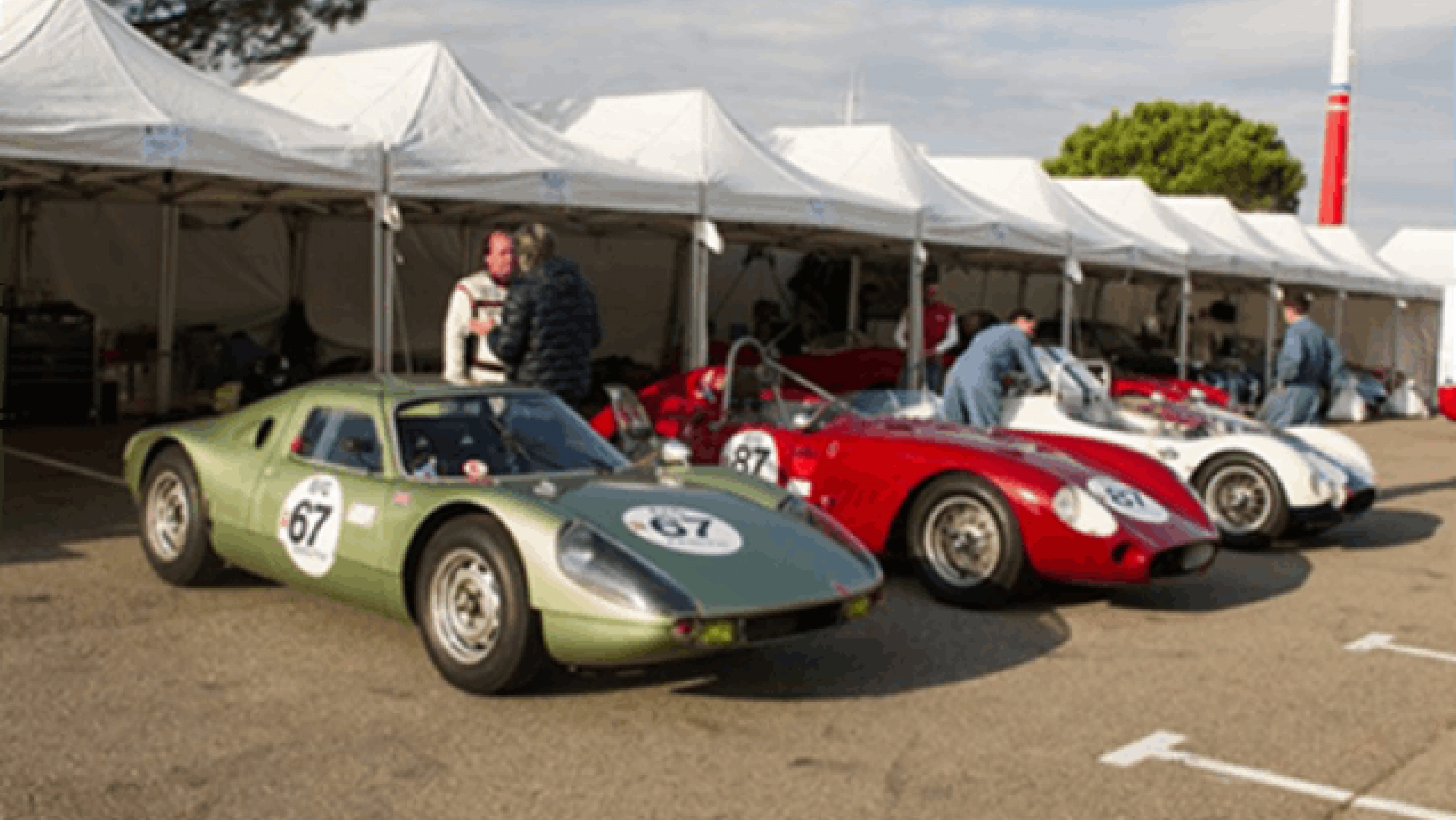Eight Favorite Cars from the 2017 Dix Mille Tours du Castellet
ne of the track’s signature features is the long Mistral straight, which is named after the strong winds that regularly batter the area—including on the Sunday of this year’s Dix Mille Tours. We were also on hand to enjoy the final rays of sunshine of the 2017 and also to endure the strong winds and have selected the eight stars of the event.
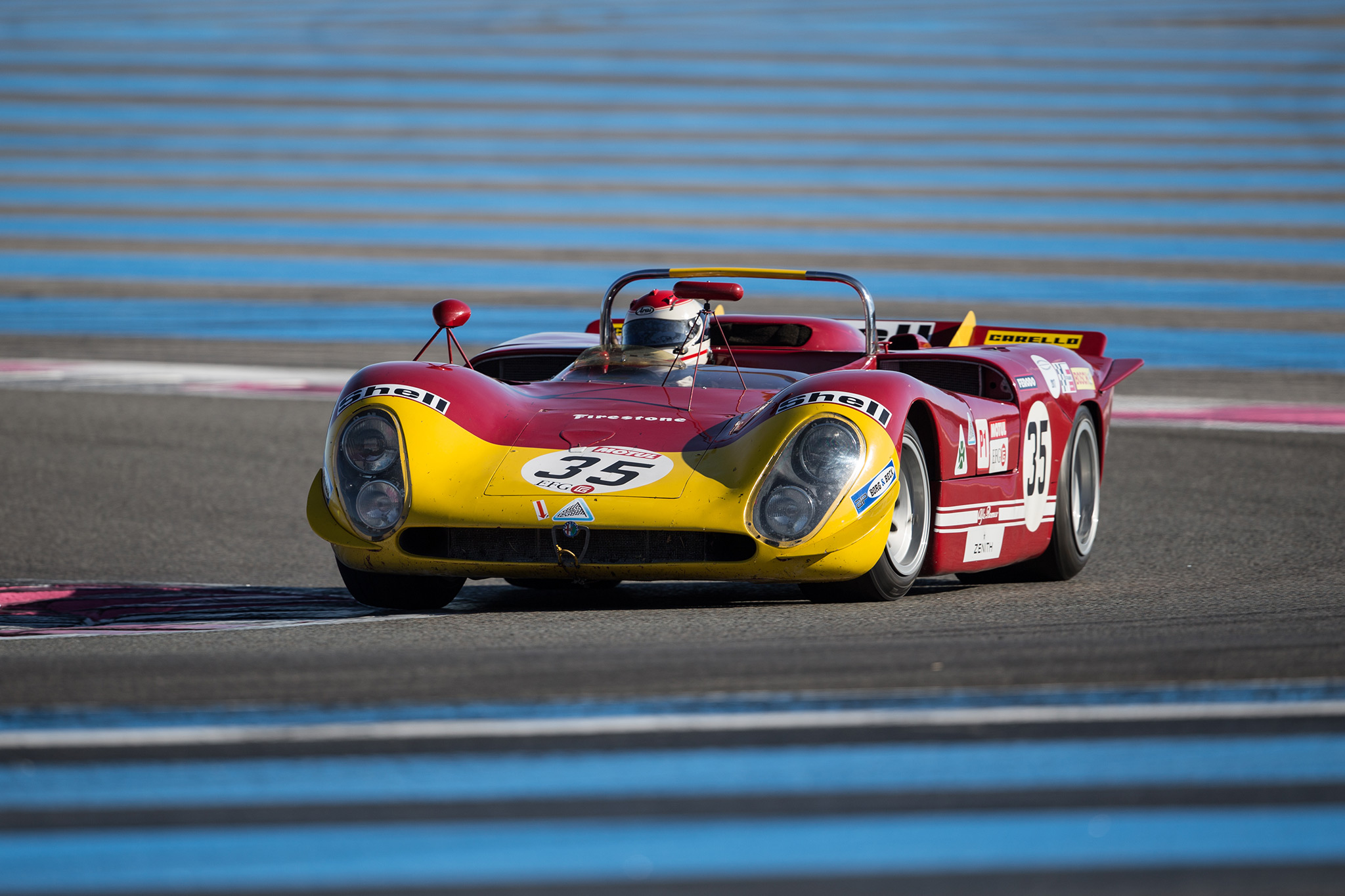
Alfa Romeo Tipo 33
From 1967, Alfa Romeo raced a wide variety of sports racers for a decade, all of which were dubbed Tipo 33 despite the many distinct differences—and several competed during the weekend. Two, a 33/3 and a 33TT3, were powered by 3.0-liter V-8 engines, but each has a distinctly different chassis.
The latter’s chassis was also used for the later 33TT12, which is powered by a flat-12 engine. Displacing just under three liters, the Italian engine produced a glorious howl. During the weekend, it was re-united with Le Mans legend Derek Bell, who also raced these cars in person.
Also present in the paddock was a 33/2, an earlier car that used a 2.0-liter V-8.
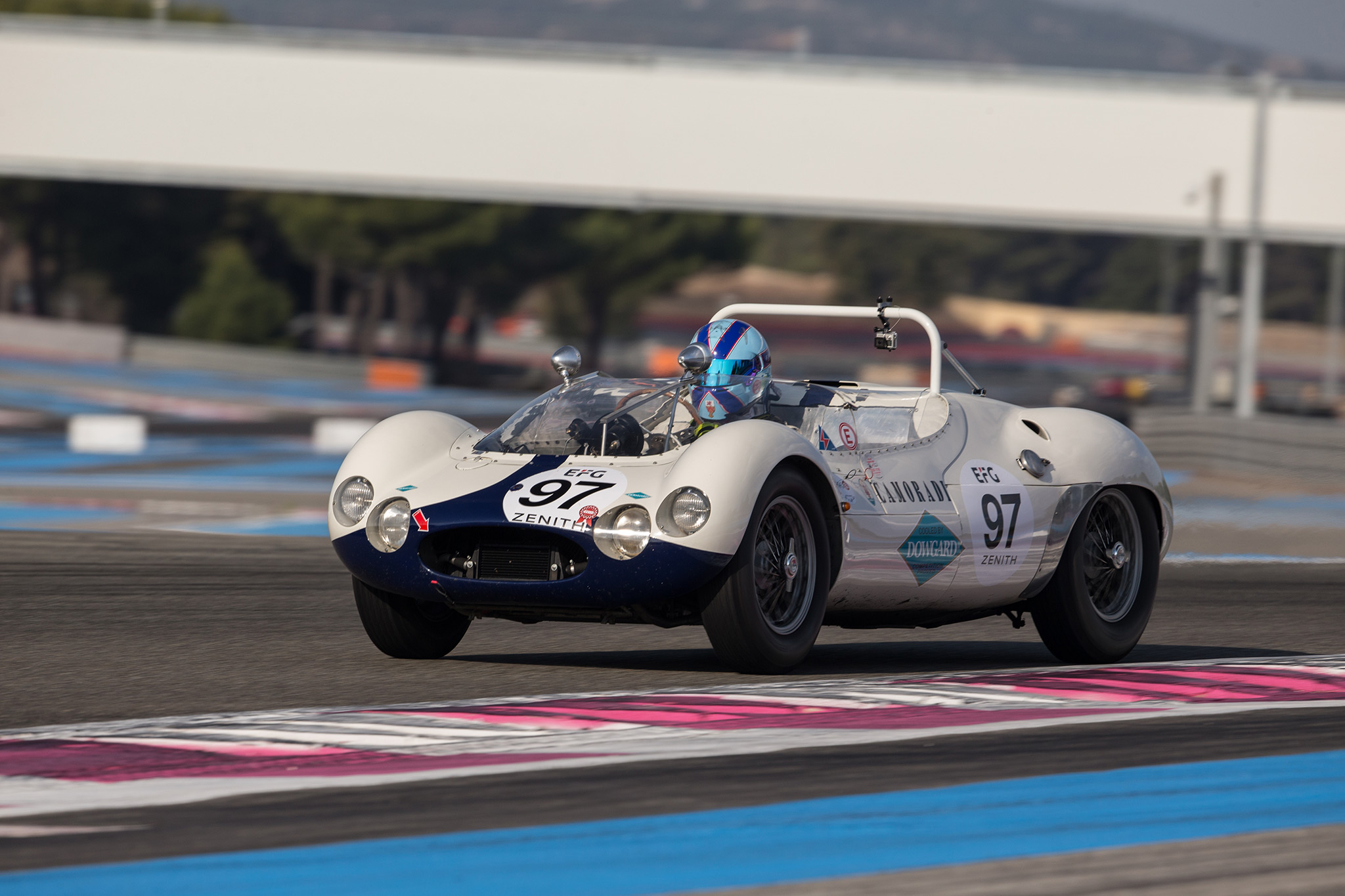
Maserati Tipo 63 ‘Birdcage’
Of the many competition cars produced by Maserati, one of the most instantly recognizable is the ‘Birdcage’. Officially known as the Tipo 60 or Tipo 61, depending of the size of the engine used, these front-engined sports racers earned their nickname because of their elaborate and very visible spaceframe chassis. That same chassis was also used for the mid-engined and very rare Tipo 63 that was raced at the Dix Mille Tours.
For all intents and purposes, the Tipo 63 was a Tipo 61 with the engine and driver changing position. While some used a newly developed V-12 engine, the car at Paul Ricard used the same four-cylinder engine as the front-engine cars. It was raced in period by the American Camoradi team. Until it was sidelined due to overheating, the car was one of the stars of the Italian-only Trofeo Nastro Rosso class.
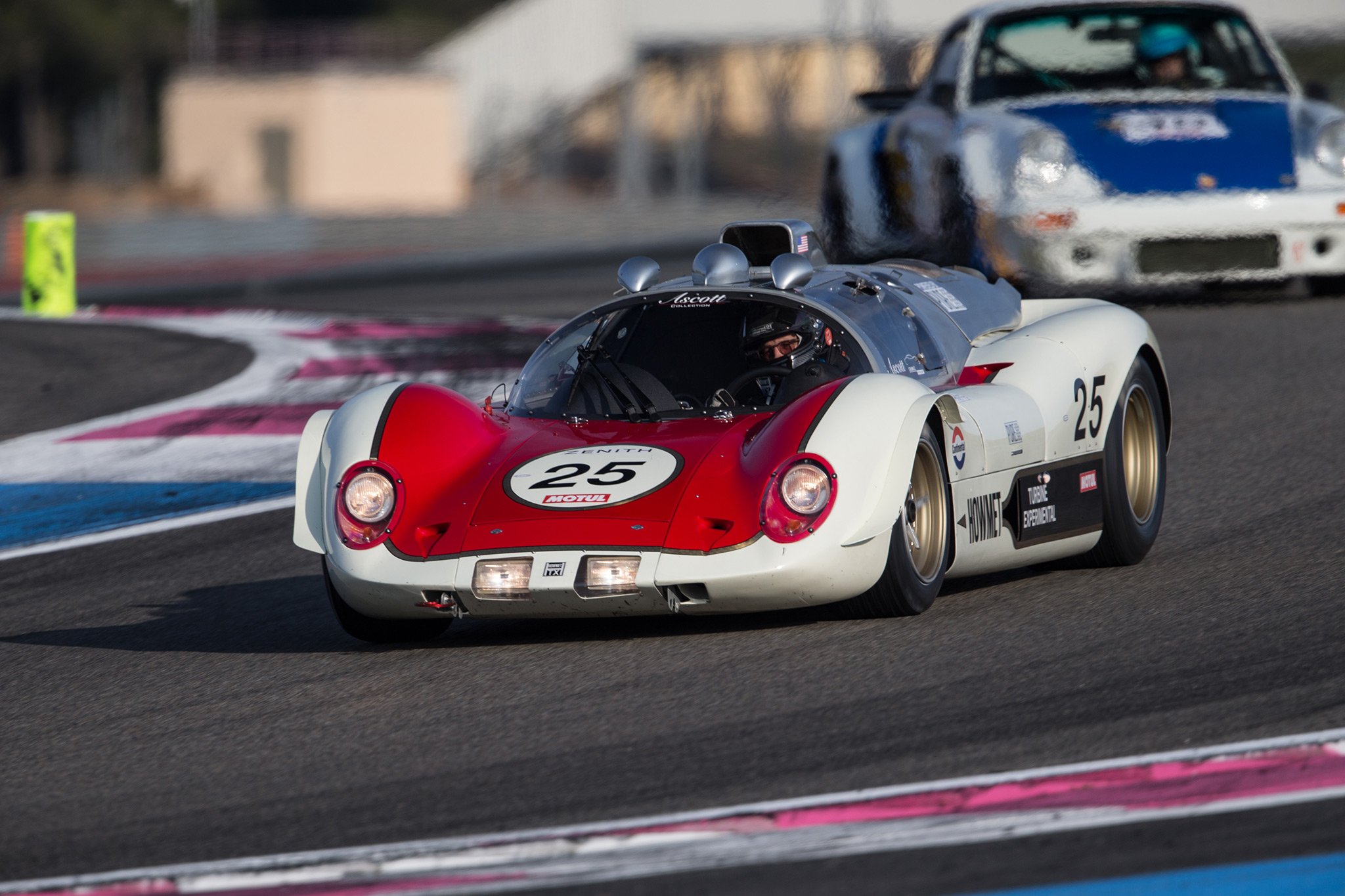
Howmet TX
Paul Ricard is located right next to an airport, so the whizzing sound of turbine engines and the smell of kerosene are familiar sensations, but during the Dix Milles Tours, there was another source—this Howmet TX. Funded by the Howmet company, these unusual racing cars featured a Can-Am derived chassis and a turbine engine from a period helicopter. They were only used for a single season and the car present at Paul Ricard was not raced in anger during its period.
Originally constructed to compete in Can-Am events, it was set aside when the program ended. It has only recently been put back together and fitted with a body similar to that of the Howmet TX cars that raced at Le Mans by a French enthusiast. He had owned one of the two Le Mans racers, and was so sorry he had sold it that he bought and restored this one.
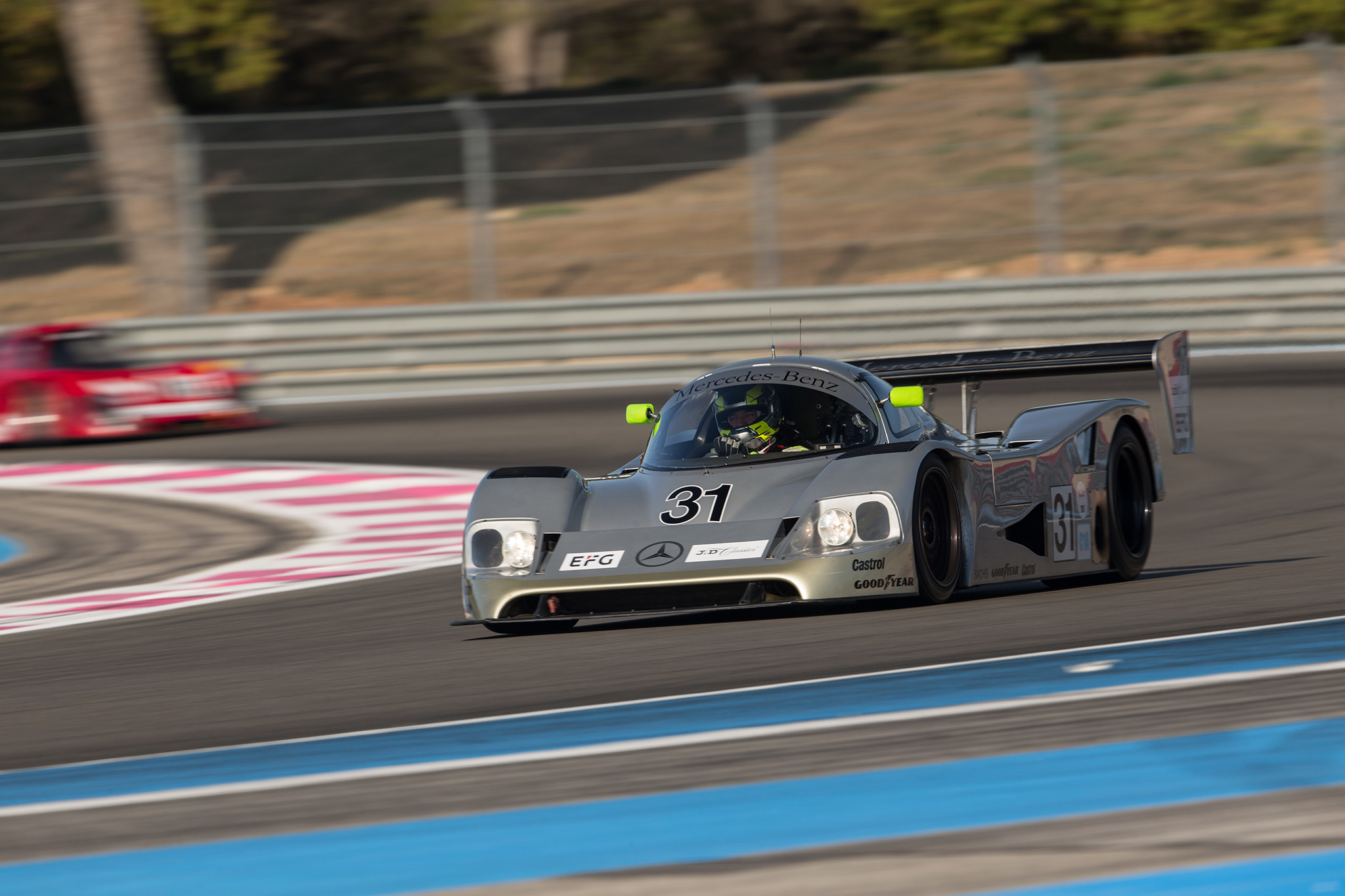
Sauber-Mercedes C11
“Menacing” is perhaps the best word to describe the sound produced by twin-turbo V-8 that powers the Sauber-Mercedes C11 Group C car, of which two raced at the 2017 Dix Mille Tours. Not muffled at all by the two turbos, the 5.0-liter engine produces a very loud thunder that is particularly impressive down the long Mistral straight. With the period fuel consumption limits that governed Group C no longer of concern, these V-8s are good for well over 800 hp, making the C11 the fastest of all cars out on track during the weekend. Michael Schumacher used one of the two examples present during the 1990 season.
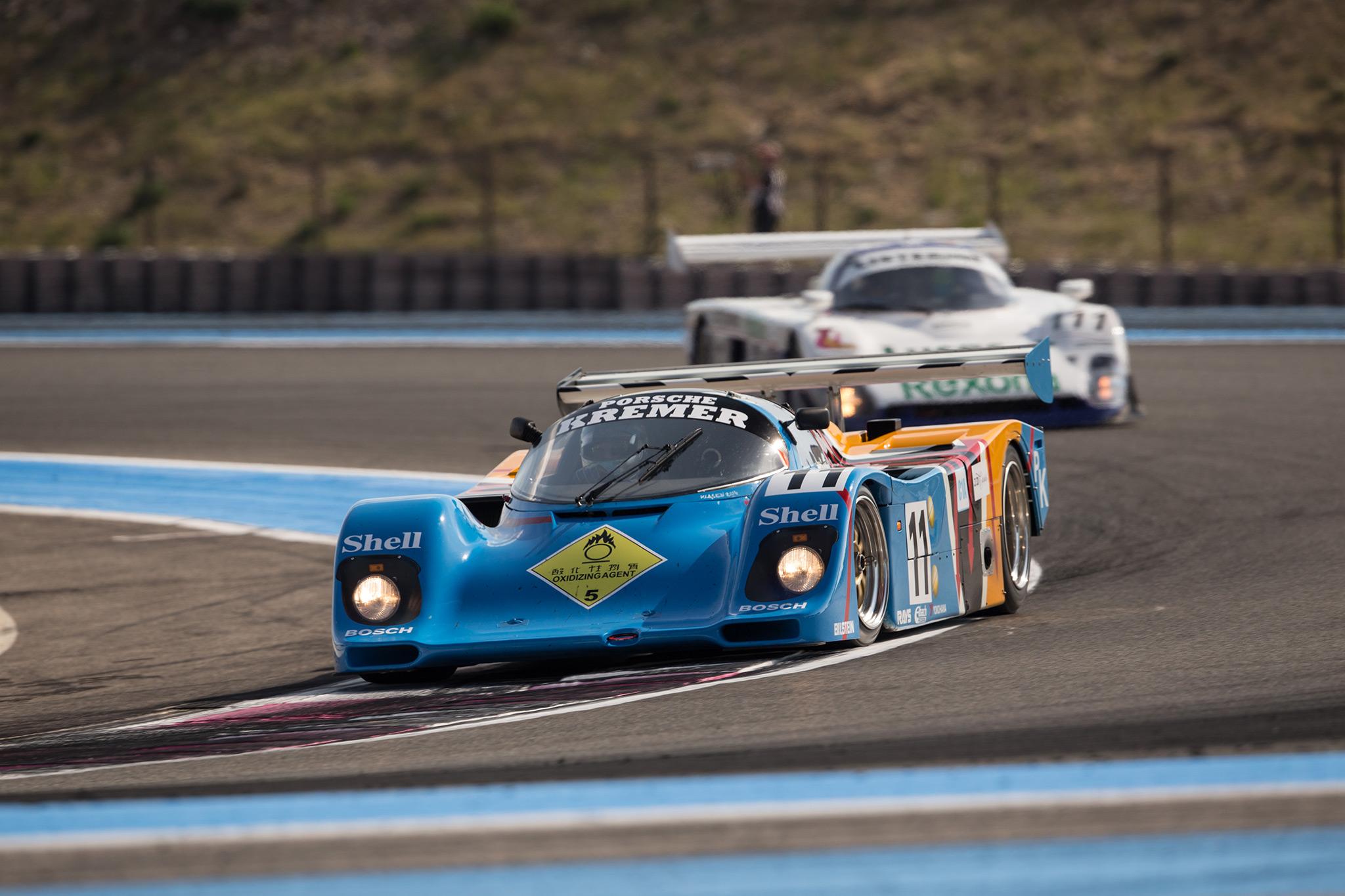
Porsche 962C
Perhaps the most famous of all Group C cars is the Porsche 962C. The factory cars won Le Mans twice, but it was also raced with great verve by the numerous privateers. An evolution of the 956 introduced in 1982, the 962C was a relatively straightforward machine built around a sheet aluminum monocoque chassis. To keep the cars competitive, many of the aforementioned privateers created their own evolutions of the 962, usually with more sophisticated honeycomb-aluminum or even carbon-fiber composite chassis. The seven 962s in attendance at Paul Ricard showed the full spectrum of variants, from the factory-built cars right through to the Kremer Racing CK6, which featured a full carbon-fiber chassis. It was also great to see legendary team owner Reinhold Joest at the track, with one of the 962Cs entered by Team Joest.
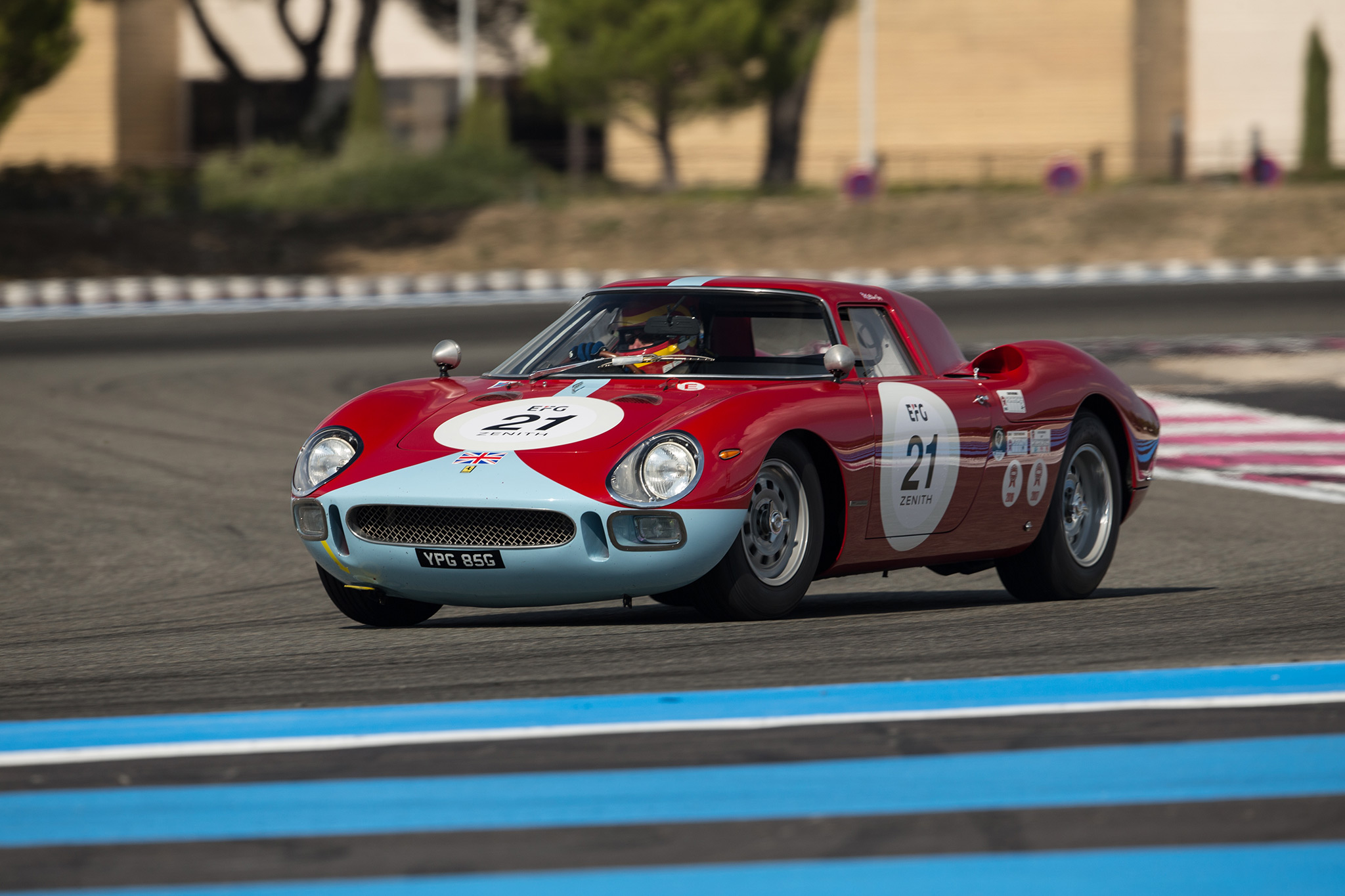
Ferrari 250 LM
Ever the conservative, Enzo Ferrari arrived late to the mid-engine party. But when he did, the gorgeous 250 LM was one of the first results. Somewhat optimistically and mainly to fool the authorities responsible for homologation, it was launched in 1964 as a 250 GTO with the engine moved behind the driver. It was, in fact, more closely related to Ferrari’s mid-engine sports prototypes that had won Le Mans outright in 1963. While those were reserved for factory teams and preferred customers, the 250 LM was for sale and eventually over 30 were built and raced all around the world. In 1965, one was used to score Ferrari’s final outright victory at the 24 Hours of Le Mans.
The example in action at the Dix Mille Tours was raced in period by British Ferrari importer Maranello Concessionaires, and still boasts the team’s instantly recognizable pale blue stripe.
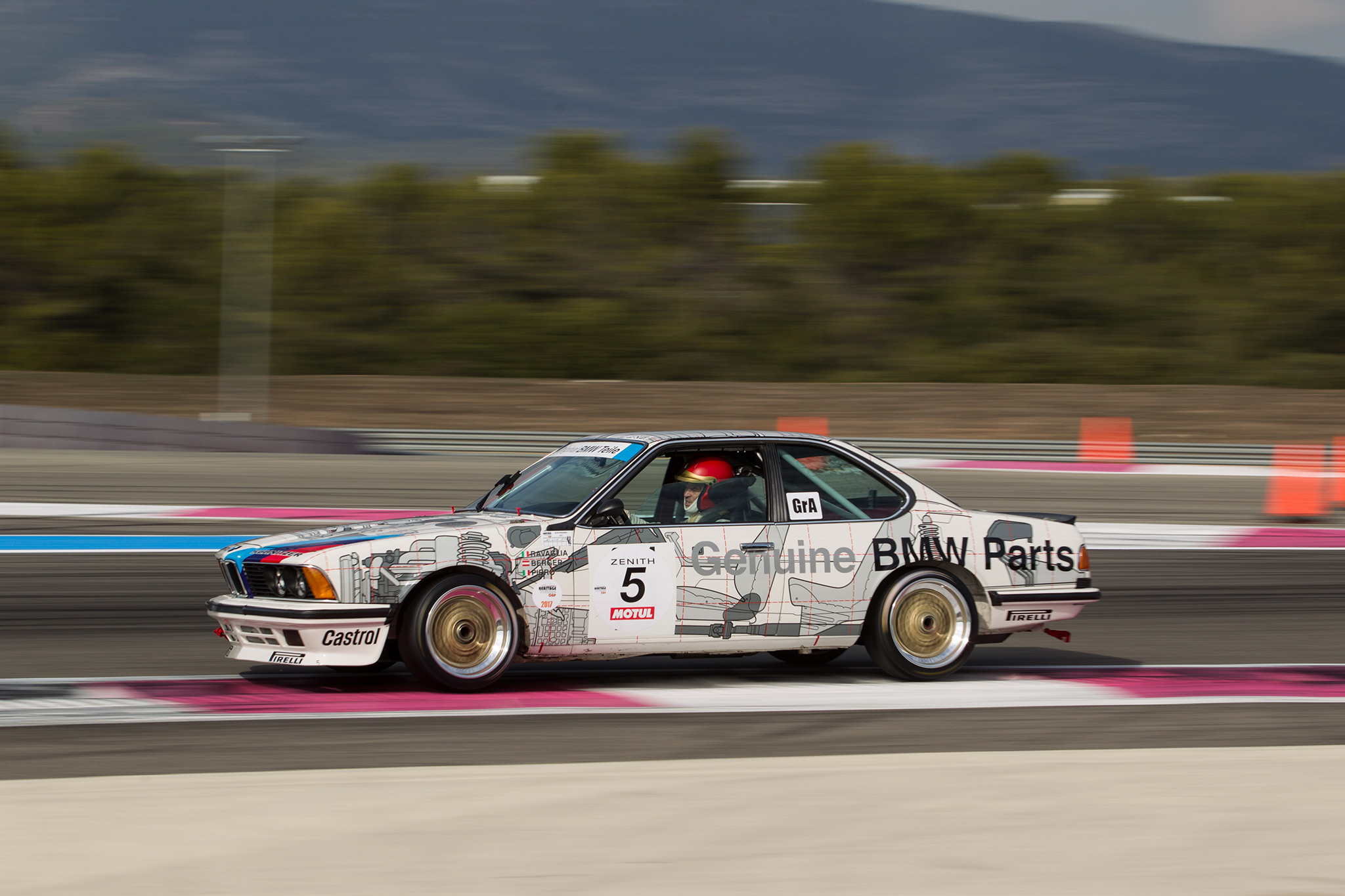
BMW 635 CSi Group A
One of the most iconic touring cars of the 1980s is the Group A version of BMW’s 635 CSi. It was raced with great success mainly in Europe and Australia in a wide variety of colors. The most famous livery of all undoubtedly is the Original Teile or Original Parts of the factory backed Schnitzer team. The only one of these works cars in private hands was on hand and due to be re-united with original driver Emanuele Pirro until an engine failure intervened. The half-dozen other examples also entered in the Heritage Touring Cup did take to the track, and one of the six-cylinder examples was driven to victory in the Group A class.
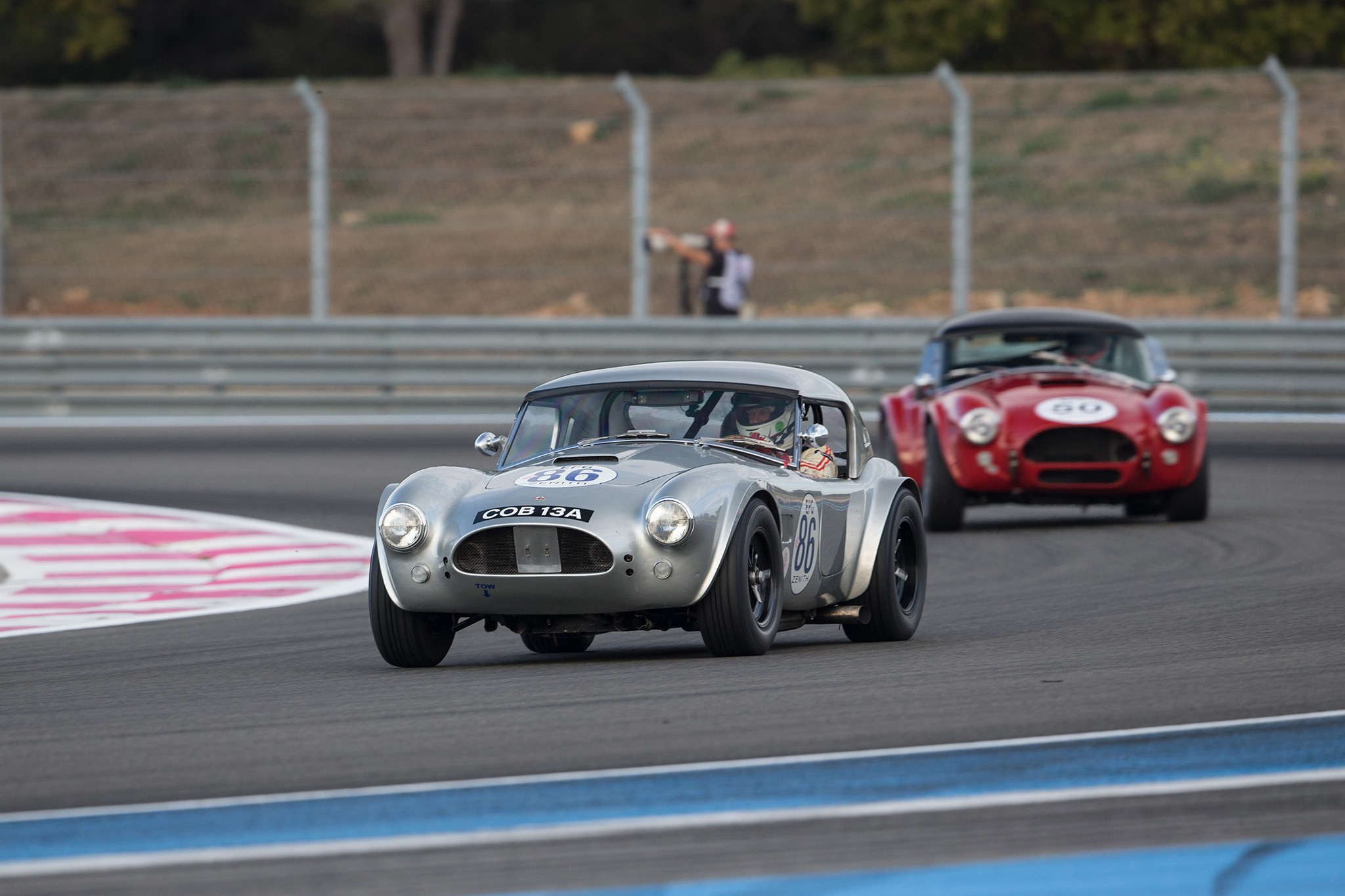
AC Shelby Cobra
The two-hour Sixties’ Endurance class that ran into the evening on Saturday was dominated by AC Shelby Cobras. The grunt of the small-block V-8 used by these mighty machines gave them a clear edge, and fastest of all was the example entered by Belgian Christian Dumolin, who drove it to victory along with his quicksilver compatriot, Christophe van Riet.
Among the other Cobras entered was one of the examples originally raced by the factory team at Le Mans in 1963. This was the first to be fitted with a hardtop to reduce drag. Season champion Andrew Beverley also used a Cobra with period racing history; his was the first car raced by American sports car ace Elliott Forbes-Robinson.
Source: http://www.automobilemag.com/news/eight-favorite-cars-2017-dix-mille-tou...
